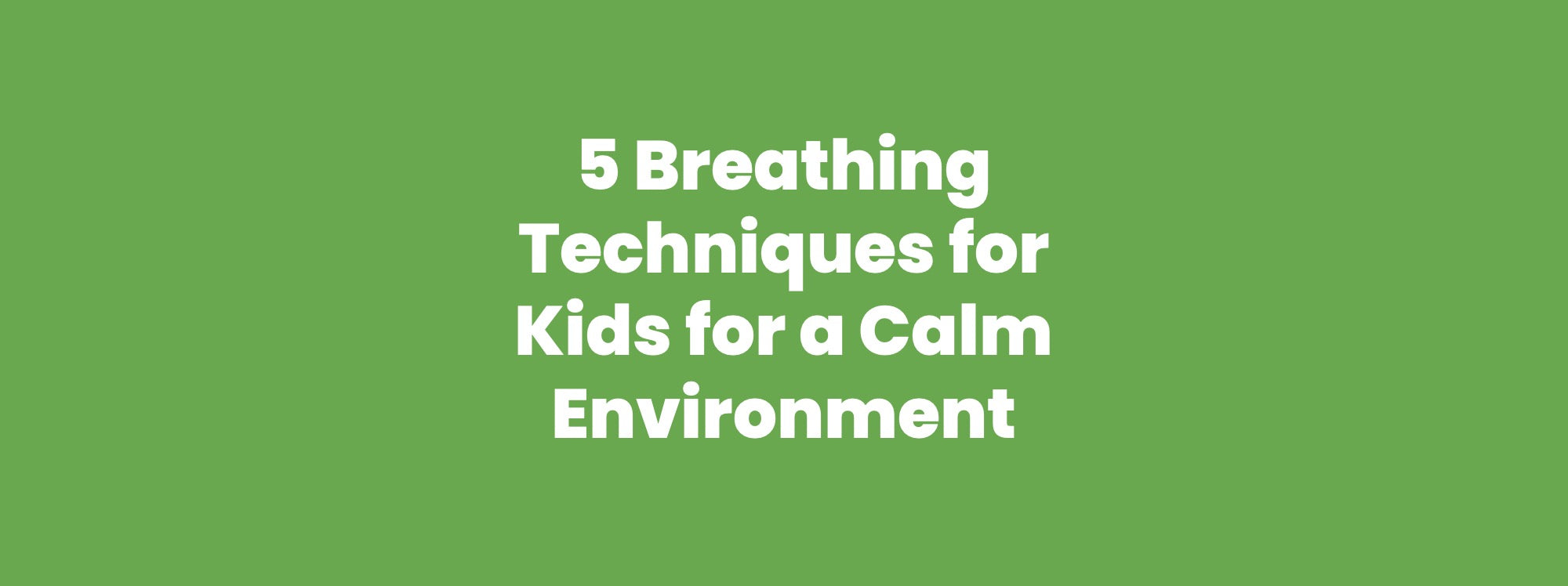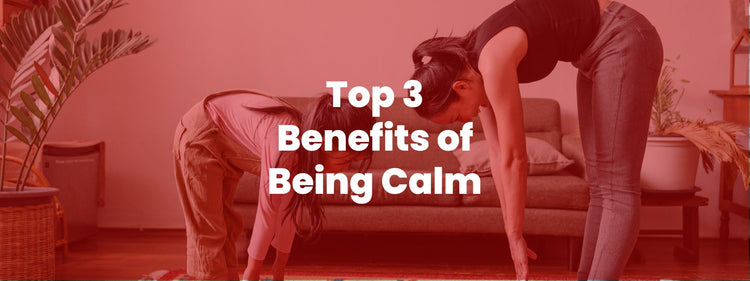5 Breathing Techniques for Kids for a Calm Environment

When it comes to parenting, we all need a breather every now and then. When it comes to being a kid, well, you could also use a breather here and there, too. That's why we have put together a full guide with 5 fun breathing exercises for kids. Teaching your kids deep breathing techniques is a useful tool to help them to relax and re-focus.
Whether it is the middle of summer and the kids are used to playing all day every day, or if it is deep in the school year and kids are struggling with the usual stresses of homework and tests, you could surely use some way to calm down the home, and make everything more peaceful for all.
BENEFITS OF BREATHING EXERCISES FOR KIDS:
- Reduces anxiety
- Improves relaxation
- Relieves stress
- Calms the mind
At the Calm Caterpillar, we subscribe to the Positive Behavior Interventions and Supports (PBIS) methodology of finding behavior intervention solutions that direct children towards positive future behavior, rather than only punish them with negativity for previous behavior.
PBIS teaches the importance of breathing exercises, which is something we specialize in at the Calm Caterpillar through our Parent Class and Parent Field Guide, which is appropriate for children aged 3-10 and provides lifetime access to the online class.
Our class teaches a number of breathing techniques, which we will give an overview of below.
Our Five Breathing Techniques for Creating a Calm Home Environment
Breathing exercises have many benefits for people of all ages. For one, it can help regulate our “fight or flight” stress response, which, in our modern post-cave-dwelling lives, gets invoked more often over things that are not threats to our survival on earth.
Children may have a stress response to something as small as a toy going missing or not being shared, or having a parent disagree on what an appropriate bedtime is.
Parents have bigger worries, typically related to health, finances, work, and other things, but they can still benefit from a breathing exercise that lets them know what is worth responding to, and how.
What will result from implementing any or multiple of the following breathing exercises is not only a calmer individual, but a calmer family and home life as well, which can be especially desirable for parents with young children.
Hand Breathing to Remember the Here and Now
Though many meditation techniques are all-mind, encouraging you to simply notice your body rather than interact with it, but it can actually be quite beneficial to interact with your body during a breathing exercise.
What you do here is breathe in and out while tracing your index finger up the five fingers on a hand.
A mind-body connection can be great for reminding kids to “stay in the moment,” and not let their thoughts get away with them. To remember the here and now, and reality, rather than let their minds take them to a negative or stressful place that can create problems around the home.
Buddy Breathing for Siblings
Whether your kids get along as siblings or do more fighting than playing, the technique of buddy breathing can be instrumental in keeping a calm house, whether they have been playing together or quarreling.
This is basically the hand breathing exercise but with a twist: Instead of you tracing the fingers of your own hand, you let someone else trace your fingers, or vice versa.
This can be especially helpful for rivalrous siblings, who can benefit from a breathing exercise that makes them think of other people, and how important contact can be—and how peaceful and not-stressful it can actually be.
What you get, then, is a breathing technique that teaches kids how to better exist with each other, and realize how their actions can impact others.
Lion’s Breath
Here’s a technique that kids will easily enjoy doing: Stick out their tongues and roar like lions.
While many breathing techniques teach you to calm down, this one teaches you to release any negative energy bottled up, in a fun and healthy way.
For parents, the potential silliness of the whole thing can help make you less self-conscious, and will let you and your kids be “equal” during the breathing exercise.
What you do is sit cross-legged on the floor (criss-cross applesauce, in the parlance of children) and lean forward slightly with your fingers spread wide.
Then, you inhale through your nose, open your mouth wide with the tongue stretched down to the chin, then exhale powerfully with a “ha”-sounding noise that comes from deep within.
Breathe normally until you are ready to roar again, which you ought to repeat a few times to let it all out.
This can be a great exercise to wind down after a fight between family and siblings that the buddy breathing just won’t fix.
Flower and Candle Breathing
No flower and candle is necessary for this exercise, only your imagination.
Make both hands into fists, and pretend a flower is in the left hand and a candle is in the right.
When you inhale, pretend you are sniffing the flower.
When you exhale, pretend your are blowing out the candle.
Also, pretend the candle automatically relights after you blow it out, for as long as you wish.
This type of technique focuses the mind on an imaginary task, so that it does not drift off and busy itself with other thoughts. This can be useful, especially when a child or parent has a lot on their mind that they wish to dwell on.
For children, a useful direction is to remind them to really try and smell the flower, and really try and blow out the candle. This will help the breathing be deeper, and fuller.
Belly Breathing
Belly Breathing not only relaxes the mind, but helps the body grow healthier, which can be especially helpful for parents and children with asthma.
Lie on a flat surface with your knees bent, one hand on your chest and the other on your belly below your rib cage.
Inhale deeply, and if you are doing that correctly, your chest-hand will stay still while your belly-hand will rise.
Tighten your belly, then exhale deeply, which ought to let your belly-hand descend to where it first was.
This method of breathing not only focuses your mind on things other than distracting or stressful thoughts, which are more easily controlled after a breathing exercise, but it also helps strengthen your diaphragm, which people with lung issues will surely be grateful for.
The Calm Caterpillar Is Here to Help
Interested in seeing how we can help make your home a calmer place? Get in contact with us today, and we will help!
Check out our Calm Caterpillar Parent Class, Calm Corner Kit, and more on our website!


